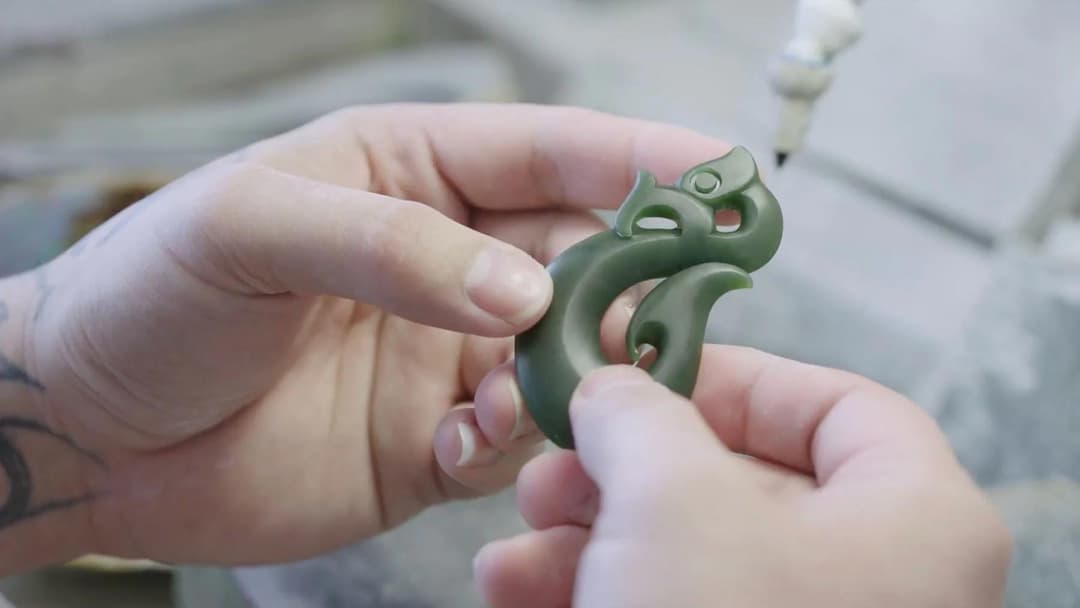

The manaia is a spiritual guardian, depicted with the head of a bird, the body of a man, and the tail of a fish. In Māori tradition it protects and balances, guiding the wearer through life. Carved in pounamu, the manaia carries its strength as both art and symbol.
Believed to be a messenger that moves freely between the spirit realm and the human world, the manaia is a mythological creature, greatly respected in Māori culture and a predominant motif in wood and greenstone carving.
Originally Māori had no written language, and symbolic meanings such as the manaia were embodied in carving, knots, and weaving to communicate and record stories, while traditional songs and dances shared the myths and folklore of ancestors.

Although subject to much controversy, the profile of a Manaia is commonly thought to depict the head of a bird, the tail of a fish, and the body of a man. Yet, this depiction varies between iwi (tribes), and the Manaia is also seen as a bird-headed man, bird, serpent, reptile, and human figure in profile.
Just as the human figure, Manaia are one of the most malleable motifs within Māori design and are often found in fragmented forms and contortions, and incorporated with other symbols such as the Tiki. As a versatile symbol, they are distorted in artworks by utilizing an eye, mouth, tooth, arm, body, leg or foot to create artistic compositions and fit any space needing to be filled.

Today, pounamu Manaia are gifted between loved ones for protection and worn to ward off evil. Our carvers draw meaning and inspiration from the significance and adaptability of the Manaia motif and use their creativity and personal influences to craft unique Manaia designs.



